cement industry
Italian Government Seizes Cement Plant for Toxic Violations
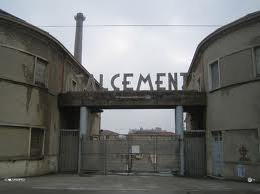 This is what we call enforcement.
This is what we call enforcement.
Italian Justice Department officials seized a cement kiln run by Italcementi, the world's fifth largest cement manufacturer, near the village of Velletri, southwest of Rome, for not completing updates in equipment that would bring it in line with European Union environmental standards.
It's the second time this year that the Italian government has resorted to seizure of a major polluter's facility. A steel plant was ordered shut last month.
In the case of the kiln, operations will continue while the modernization is being completed.
Italcementi owns the old Essroc cement plants in Logansport, and Speed, Indiana, Nazarath. Pennsylvania, and Martinsburg, West Virginia as well as Canada and Puerto Rico.
Midlothian Cement Plants Linked to Higher Child Asthma Rates
On the left is a computer-modeling image from the Texas Commission on Environmental Quality showing the direction of the predominant downwind plume of pollution from the three Midlothian cement plants - from extreme NW Ellis County, blowing diagnoally across Tarrant County and into Wise County. On the right is the map from the original 2009 Cook Children's Hospital CCHAPS study indicating levels of childhood asthma in the Hospital's service area. It tracks closely with the direction of the plume and asthma levels increase in closer proximity to the cemnt plants. 
According to researchers Patricia Newcomb and Alaina Cyr from the UTA College of Nursing "…the bulk of Tarrant County asthma cases lie directly in the path of southeasterly winds that have historically carried high levels of particulate matter from working cement kilns in a neighboring county. Asthma prevalence increases in a linear configuration within the path of the 'cement plume' as residential location comes closer to the cement kiln area."
Exposure to Particulate Matter pollution, or soot, is a well-known known cause for asthma. It can also make a child's asthma worse.
"This latest study is one more piece of empirical evidence that we need to decrease pollution from the Midlothian cement plants to secure the right of our children to breathe without getting sick, " said Jim Schermbeck, Director of Downwinders at Risk, a local group originally founded in 1994 to oppose the burning of hazardous waste in the Midlothian cement plants.
Proximity to the pollution from the three Midlothian cement plants was the only environmental factor geographically associated with higher concentrations of childhood asthma, ruling out poverty and indoor air pollution. There also wasn't a strong correlation to urban gas drilling, although the authors concede that "urban drilling may play a part as well" in the region's higher than normal child asthma rates, and there was no direct comparison between the geography of drilling activity and area asthma levels.
In 2009, Cook Children's Hospital released its Community-wide Children's Health Assessment and Planning Survey (CCHAPS), the largest examination of childhood health in North Texas ever undertaken. It found that Tarrant County and the western side of the North Texas region suffer childhood asthma rates significantly higher than state and national averages.
In "Conditions Associated with Childhood Asthma in North Texas," published in the October edition of ISRN Allergy, Newcomb and Cyr revisit the Cook study and delve more deeply into its data. "The purpose of this study was to identify significant associations between asthma diagnosis, comorbid conditions, and social problems in children." The complete article can be accessed on the Cook Hospital CCHAPS website page devoted to asthma, under "Special Reports."
Midlothian is the home of the largest concentration of cement plant manufacturing capacity in the United States. It hosts three large cement plants – TXI , Holcim and Ash Grove – with a total of six kilns. They are the largest stationary sources of pollution in North Texas. Reports submitted by the plants themselves show they poured over a million pounds of Particulate Matter pollution into the North Texas air in 2009.
EPA recently announced that it was considering once again delaying the implementation of new federal emission rules, including stricter particulate matter pollution standards, from 2013 to 2015 that have been in the works for two decades. The delay would also water down proposed PM pollution standards. Schermbeck said Newcomb and Cyr's analysis shows the real world costs of such a rollback.
"It's a scientific fact, endorsed by EPA, that inhaling tiny bits of particulate matter can make people sick and even kill them. What this study makes clear is that the agency is senselessly condemning more Tarrant County kids to illness and suffering by delaying rules that were supposed to have been in place in the 1990's. It's time to start saving lives by reducing this kind of pollution."
Dust from Homes Near Cement Kilns Have 2 to 9 X More Dioxin
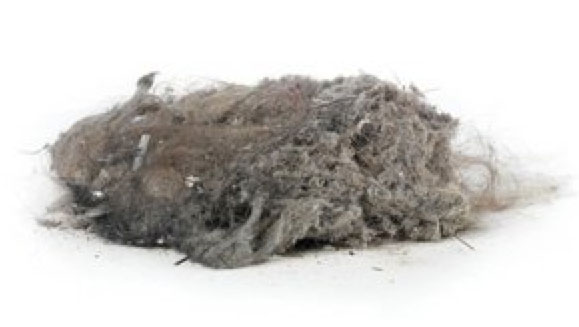 Here's some information the Midlothian Chamber of Commerce probably won't be linking to at their website.
Here's some information the Midlothian Chamber of Commerce probably won't be linking to at their website.
A national research team that includes personnel from The National Cancer Institute, Colorado Sate University, the University of Washington, and the Mayo Clinic has concluded that homes within one to three miles of cement plants contain house dust that contains 2 to 9 times more Dioxins than homes not located near kilns.
Dioxins are among the most toxic substances ever tested by EPA. Dioxin is the poison in Agent Orange. It's what made both Love Canal in New York, and Times Beach Missouri Superfund Sites. It's so toxic it's measured in grams, not pounds. It's a carcinogen and an endocrine disrupter. Like Lead and Particulate Matter, there is no known "safe" exposure level to Dioxin.
40 homes across four states were chosen from an earlier non-Hodgkin lymphoma study. Samples of dust were collected from vacuum cleaner bags and test for a variety of Dioxins (the testing for Dioxins is VERY expensive and that's one reason you don't see a lot of field tests for it). Four kinds of dioxin-emitting facilities identified by EPA were in close proximity to one or more of the sampled households – cement kilns, coal plants, sewage sludge incinerators, and medical waste incinerators. Proximity to major roadways was also considered a separate source. But "high concentrations" of Dioxins were only associated with homes near cement plants. Major roads also saw "elevated" levels, but not nearly as much as kilns.
The full study was recently published in the September edition of "Science of the Total Environment."
Midlothian currently hosts six active cement kilns. There were as many as ten up until 2008. It is the largest concentration of cement manufacturing in the nation. And all of DFW is downwind of it most of the year.
As we mentioned last week, a 1999 study by Barry Commoner and his group out of Washington University in St. Louis traced Dioxins from the TXI cement plant all the way to the Arctic Circle. So don't feel safe if you think you live far enough downwind not to be affected by the Midlothian plant plumes.
For years, Midlothian residents and others have been asking the federal government for a meaningful health effects and testing protocol for determining the total load of dioxins in and around these kilns. It hasn't come. Their requests were based on published higher incidents of certain kind of birth defects in Ellis County, as well as clusters of animal health effects observed by local ranchers and breeders. And these observations started when hazardous waste burning began in the mid-1980's. EPA has stated that waste-burning kilns release more dioxin than non-waste burning ones.
So it's important to remember that the astounding high concentrations of Dioxins that were located in homes in close proximity to a a cement kiln were linked to a kiln not burning hazardous waste. Granted, we don't know what kind of "non-hazardous wastes" it might have been burning, but the results begs the question about how much higher Dioxin levels might be in a place like Chanute, Kansas where Ash Grove's kiln is still burning hazardous wastes.
And it also once again points out why we can't be complacent about the kilns in Midlothian just because they quit burning the worst of the worst toxic wastes. Even without that practice, they pose an on-going clear and present danger to the region's public health from just their "routine" emissions. Now that all of them have or want permits to burn plastics and garbage, you could reasonably expect to see an increase in Dioxins and other forms of more exotic pollution spewing out of their tall smokestacks. And you know why their so tall don't you? So that the pollution they're releasing travels further downwind.
Yes Virginia, There is a Pro-Cancer Lobby
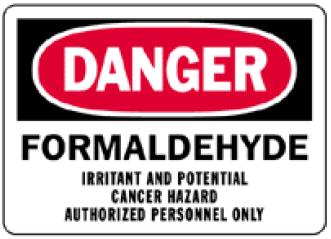 The New York Times' Nicolas Kristof, who's established himself as one the nation's leading editorialist on the harms of what he calls "Big Chem," has another excellent piece in the Sunday edition.
The New York Times' Nicolas Kristof, who's established himself as one the nation's leading editorialist on the harms of what he calls "Big Chem," has another excellent piece in the Sunday edition.
Using the curious case of Formaldehyde, the carcinogen that isn't one according to the people who make money manufacturing it, Kristoff draws a portrait of the kind of industry-fueled professional obfuscation that Big Tobacco, Big Oil and Every other Big Industry of the last 60 years has used to escape necessary regulation.
Part of this strategy is to block, delay and bury information that proves your product's guilt, and so it is with Formaldehyde, something most of us think we only run across in High School biology labs. As it turns out, the chemicals is used in a wide variety of products and our homes are full of it. Our general exposure to formaldehyde has increased. This use and exposure has risen even as the World Health Organization and American scientists have concluded that formaldehyde causes cancer.
And so a seemingly innocuous document like the 500-page "Report on Carcinogens" from the National Institutes of Health becomes a real threat to the manufactured "uncertainty" the chemical industry has spent so much to construct.
“Formaldehyde is known to be a human carcinogen,” declared the most recent Report on Carcinogens, published in 2011. Previous editions had listed it only as a suspected carcinogen, but the newer report, citing many studies of human and animal exposure to formaldehyde, made the case that it was time to stop equivocating."
This conclusion made the report an instant target. Industry got its supporters in the house to demand a follow-up study for Formaldehyde and that no other Reports on Carcinogens be published with the new consensus language on its cancer-causing impacts.
So a chemical that the science says is clearly a carcinogen is still being sold in lots of household products as if it was perfectly safe thanks to folks who, collectively, make up what might be called the "pro-cancer lobby."
Besides all of us being exposed to Formaldehyde through consumer products, people who live in places where natural gas is being mined, like the Barnett Shale, as well as those downwind of waste-burning cement plants, like the ones in Midlothian, get dosed with more of the stuff. So, you know, we're doubly-blessed in DFW.
Another Waste Fire at a Waste Burning Cement Plant
Indian downwinders complain of air pollution from their local cement kiln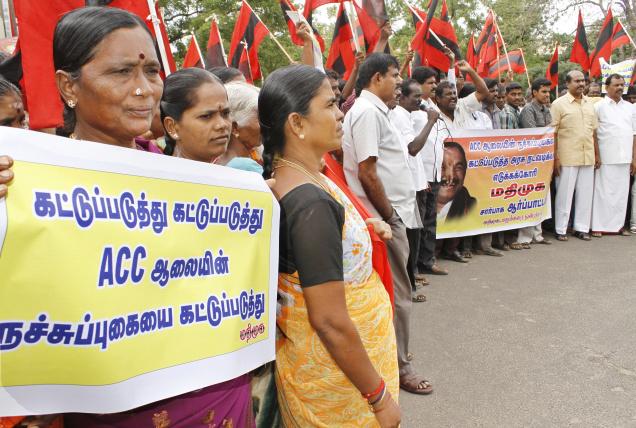
This time in India instead of Utah or South Carolina.
In Coimbatore, plastic and leather wastes stockpiled waiting to be burned as "fuel" at the Madukkarai cement works spontaneously combusted in a three hour fire that did not result in any known injuries at the plant.
However, thick columns of black smoke poured into the sky and that stuff, as the late Dr. Commoner would note, has to go somewhere. A lot of it will no doubt dind its way into the lungs of downwind residents. More than 200 tons of waste was gutted in the fire out of at total twice as large.
Despite local fire officials urging the cement plant to enclose the waste for some time, it had not done so. That is an apparent violation of state law. And readers, will it surprise you in the least to learn that the plant was already a longtime source of complaints from local residents?
Meanwhile the Fire and Rescue Services Department officials pointed out that storing combustible waste materials outside the plant without adequate protection was in violation of the Tamil Nadu fire service rule of 1990.
"It is a violation of section 250 of Tamil Nadu Fire Service Rules 1990 and we will issue a notice to the factory and will give them 15 days to store the waste materials inside a roofed structure with protective walls," said Subramanian.
Residents have been protesting against the cement factory for a long time and have submitted numerous petitions to the district administration. They claimed that the dust and smoke from the factory was causing major health complications, especially for senior citizens and children.
"We have raised the issue on numerous occasions and also submitted petitions to the district administration but till now no action has been taken," said C Palaniswamy, a resident of Kurumbapalayam.
There is a premeditated and orchestrated campaign by the cement industry to allow kilns to become garbage burners of all kinds of wastes. We've seen it manifest itself locally in Midlothian with the TXI permit that allows that plant to burn car parts and plastic wastes.
The more kilns that become gargabe burners, the more garbage of dubious content will pile up at kilns, the more often that garbage causes a fire. We've reported on three just since the summer alone. Being downind of an uncontrolled garbage fire isn't one of the talking points the industry boasts about when it's trying to sell kilns as the industrial equivalent of Kitchen disposals, but it's looking more like a standard feature rather than an option.
Imagine That: Local Regulation of Polluters
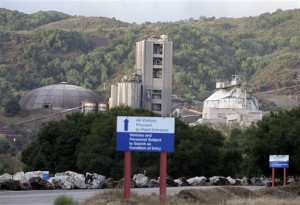 From San Francisco comes word that the area's largest Mercury polluter, the local Lehigh-Heidelberg Cement plant, may be the subject of tougher LOCAL air pollution regulations.
From San Francisco comes word that the area's largest Mercury polluter, the local Lehigh-Heidelberg Cement plant, may be the subject of tougher LOCAL air pollution regulations.
In 2011, the kiln spewed 260 pounds of Mercury into the local airshed and new regulations being proposed for the plant by the Bay Area Air Quality Management District would address not only this pollution, but emissions of dust, ammonia, dioxins, smog pollutants, and hydrocarbons.
In part, the new local rules are being spurred by EPA's own updating (and delaying) of its own air pollution rules for the nation's cement kilns. In part, local pressure from the public is driving their consideration. Bay Area for a Clean Environment collected over 1800 signatures demanding the new more stringent rules.
In California regional air boards are the prime shapers of air quality planning and policy, tailoring measures to their own geographical boundaries and problem areas. Imagine the 10-county DFW non-attainment area for smog (Collin, Dallas, Denton, Ellis, Johnson, Kaufman, Tarrant, Parker, Rockwall, Wise,) having its own air quality agency with the power to enforce new anti-pollution measures without having to get Governor Rick Perry's permission. Local control also means more opportunity for local citizens to have input rather than being blown off by ideologues in Austin intent on scoring political points rather than cleaning the air.
As we've noted before, if DFW officials really want cleaner air, they're going to have to get it themselves.
Another Chapter of Cement Kilns As Garbage Incinerators
 One of the reasons it's so disheartening to have EPA rollback the deadline for new cement plant air toxics standards and gut the PM pollution provision of those standards is because of the large and fundamental shift in what's being burned is taking place within the industry. Downwinders across the country need the protection of these new rules as soon as possible, as everything, including the kitchen sink, is being thrown into kilns.
One of the reasons it's so disheartening to have EPA rollback the deadline for new cement plant air toxics standards and gut the PM pollution provision of those standards is because of the large and fundamental shift in what's being burned is taking place within the industry. Downwinders across the country need the protection of these new rules as soon as possible, as everything, including the kitchen sink, is being thrown into kilns.
There's a determined effort underway nationwide for cement plants to secure new permits or permit "amendments" or "modifications" to burn increasing amounts of municipal and industrial garbage, including lots and lots of plastics. With new regulation of hazardous waste burning in the US taking some of the fun and profit away from that practice, the trend is now headed toward burning all kinds of "solid waste" including hard to recycle bits of municipal and industrial garbage like plastics and car "fluff" – all the non-steel parts of a car or truck, including dashboard, electronics, interiors, brake linings, etc.
Locally, TXI's 2011 permit amendment – given without public notice or opportunity for comment – is the worst example of this national trend, although Holcim and Ash Grove are also burning tires, used oils, and other kinds of industrial waste already.
Now word comes of the CEMEX plant in Louisville also making plans to burn plastics and other kinds of garbage, but
"…industrial pollution has been an issue in southwest Louisville for decades. The plant is near the coal-fired Mill Creek power plant, and residents have long complained about dust and soot from both.
Denise Allgood, vice chairwoman of the Valley Village Homeowners Association, said she was not familiar with the proposal and said any change involving air pollution is likely to be sensitive.
The (pollution) that’s coming out of that place now is of great concern,” she said. “We’ve been told by the powers that be that’s it’s better than it has ever been, but I would hope that whatever (CEMEX) is considering, they are also considering the health and welfare of the people in this area.”
What could make the problem wortse? Burning plastics that release exotic new chemicals that can hitch a ride on all that old soot and dust. We're entering a whole new era of contamination by incineration once plastics-burning becomes widespread in the nation's cement kilns. That's a big reason why we need the added protection of the EPA rules.
The Miracle of Our Perpetually-Projected Lady of the Public Hearing
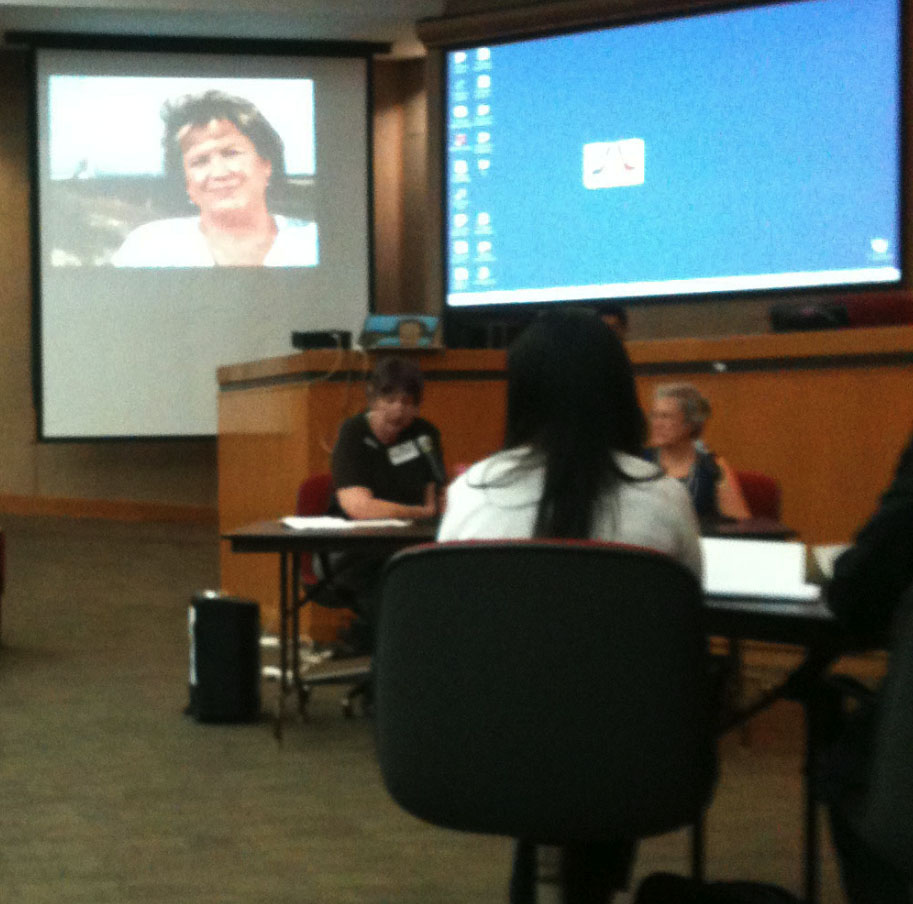 In 2009, when there was an EPA national hearing in DFW on the then-proposed cement plant air pollution rules, the mood was festive. There was a brand new administration. There was a campaign for a brand new EPA regional chief from our own ranks gearing up. The brand new air pollution rules at the center of the hearing were capping a two-decade old fight to enforce the law. They were symbolic of a shift in momentum. Citizens had won. The event was held in a large hotel ballroom, and indeed, for citizens who had been a part of that fight, it felt like a day-long celebration.
In 2009, when there was an EPA national hearing in DFW on the then-proposed cement plant air pollution rules, the mood was festive. There was a brand new administration. There was a campaign for a brand new EPA regional chief from our own ranks gearing up. The brand new air pollution rules at the center of the hearing were capping a two-decade old fight to enforce the law. They were symbolic of a shift in momentum. Citizens had won. The event was held in a large hotel ballroom, and indeed, for citizens who had been a part of that fight, it felt like a day-long celebration.
Three years later, the party was over. The newness had worn off. A once "indefensible" Bush-era ozone standard that was going to be replaced, was instead adopted by the new administration. Dr. Al had won appointment, only to pummeled into resignation by a political mugging that left even the most cynical shaking their heads. Grim persistence was the most common trait shared among the citizens who faithfully trooped to Arlington City Hall for last Thursday's national EPA hearing, where those same rules were now under attack by the Agency itself. It may have only been three calendar years, but that ballroom scene seemed sepia-toned distant now.
Which makes the attendance at Thursday's hearing more remarkable in some ways than the large crowd that gathered in 2009. Then, clean air advocates occupied 88 out of around 93 or so speaker slots available for the all-day hearing. Last week, they occupied 83 out of 86 slots. The faithful were coming, but they weren't happy about it. Isn't that always the case in these stories? Right before the faithful are rewarded with a sign?
The first speaker of the day was young Andy O'Hare of the Portland Cement Association, who, despite being on what appears to be the winning side of this battle, didn't look like he was having a good time. He dutifully and stiffly read a prepared statement that took a pro-delay stance and applauded EPA for being reasonable, i.e. agreeing with the PCA. Justification for the delay was evidenced with the help of a laminated multi-colored poster of a seven-step explanation/timeline that he held up himself without aid of easel or stand. "This timeline," he said as his unsteady grasp floated the graphic on a sea of nervous energy, "reflected the fact that the industry had concluded without a doubt that it would need exactly two years to adapt to the rules. You just had to add up the steps." It looked enough like a high school science fair project at this point for you to wonder why this industry can't invest in better PR help. We're losing to these guys?
Except from some of the same kind of praise by the Texas Cement Council, and the obligatory "We don't even agree tighter standards are necessary" rhetoric from the Texas Association of Business representative, that was the extent of testimony in favor of EPA's last-minute rollback. No individual cement manufacturers spoke. Not even TXI, headquartered only about 20 miles away in Dallas. They must think they have it in the bag.
Following O'Hare, Downwinders Director Jim Schermbeck testified in the place of Downwinders' matriarch and founder Sue Pope. News came on Friday that doctors told the 72-year old Midlothian rancher that she needed a heart transplant. Everyone thought it was a good idea for her to sit the hearing out.
But Schermbeck didn't let that happen. Not exactly. Even before any testimony began, he projected a picture of Pope on a screen above the proceedings. She was staring down at Andy when he testified. Maybe that's what made him nervous.
"These are not industry's rules. These are not EPA's rules. They are Sue Pope's rules, and you shouldn't be messing with them," said Schermbeck. Tracing Pope's 25-year fight to reduce pollution in her hometown, he told the EPA panel she and a handful of others were actually responsible for the rules and it was now destroying them. "EPA has shat on everything Sue Pope has worked for with these proposed revisions, and it should be deeply, deeply, ashamed." He concluded his five minutes by feeding a letter-size version of the same picture of Pope that was being projected larger than life into the desk-size shredder that had been donated for the purpose of telling EPA what they were destroying with their rollback. Schermbeck said the proposed delay and revision was now destroying the woman herself.
Schermbeck wanted to leave that larger-than-life image of Sue up on the screen for as long as anyone in charge would allow. He wanted it to hang like a spectre over the entire day's proceedings. But he knew the screen saver feature on his computer powering the projection would eventually kick-in and make everything go dark. It always does. He's been doing presentations with this combination of equipment for years now and it always goes dark after 10-15 minutes. He'd forgotten to turn it off for this hearing, and now it was going to kick in any minute.
Only it didn't. He kept waiting and waiting. The screen saver never came on. A five-foot Sue Pope head remained there, hovering over the Council Chamber, with eyes as large as dinner plates looking down and directly at the EPA officials taking testimony (Howdy Keith Barnett!), all day long, all 10 hours. Sue Pope was the Alpha and Omega of the hearing.
It wasn't a piece of toast or a tree trunk. But through some unexplainable mix-up of electrons, a real true life saint did make an appearance at the EPA hearing. The official minutes won't reflect it, but for the faithful, the sign was clear: Never, never, never, never, never, never, never ever give up.
Under Ms.Pope's gaze, there was a long parade of poignant and moving testimonials, most finding different ways to say "hell no" five minutes at a time.
Clint Forsvall talked about the thousands of tons of Mercury the EPA's proposed delay would dump into the air, and why, as a parent of an autistic child, that was abhorrent to him. Midlothian resident Alexandra Allred spoke about how often she's had to take her son to the emergency room for middle-of-the-night asthma attacks.
The Galemore family from Chanute, Kansas came and educated everyone on what it's like to live in an isolated cement company town where hazardous waste is still being burned and where there's no independent media, or effective government oversight. Susan Falzone from Hudson, New York came and talked about the 100-year old history of cement plant pollution in that precious river valley. Kemp Burdette from Riverkeepers in North Carolina took on the proposed giant Titan plant. Stephanie Maddin from EarthJustice in DC spoke on behalf of those that couldn't make it to Arlington due to the ridiculous 11-day notice.
Local COPD victim Harriet Irby testified why every little big of air pollution reduction helps her in the daily chore of breathing. Arlington regular thorn-in-the-side-of industry Kim Feil was there with Ben Zene. Retired physician Dr. Robert Portman gave a primer on Particulate Matter pollution. Someone showed up at the last minute after hearing about it only that day to plead for less poisons in the air. It was, she said, important to her.
Most impressive was how so many people that had come to praise EPA in 2009 now came trudging back to try and do their part to keep the rules intact. These are people who know the power of persistence, even when it's in the cause of a rearguard action that shouldn't even be taking place.
Given EPA's transparent intent to steamroll the revisions into law, did we do any good at all? We don't know. But we did our job. EPA tried to make it impossible to get people to come and show their outrage. People, lots of people, came anyway. EPA may still go through with these senseless revisions, but they'll have to do it without a scintilla of public support. We robbed them of that fig leaf.
And we don't know about you, but we're taking the miracle of Our Perpetually-Projected Lady of the Public Hearing as a sign that, although it's highly unlikely that a woman with no technical training, no money, and no political support can, with the help of other similarly-deranged citizens, eventually bring an entire national industry kicking and screaming into the 21st Century…..it can happen.
Thanks Much.
Thanks to everyone who showed-up on Thursday. More on Monday, but this will give you a run down on who spoke.
Citizens Plan to “Shred” EPA at Cement Plant Rules Hearing
 WHAT: The Nation's Only Public Hearing on the EPA's Rollback of Cement Plant Air Pollution Standards
WHAT: The Nation's Only Public Hearing on the EPA's Rollback of Cement Plant Air Pollution Standards
WHEN: 9am to 7 pm Thursday, August 16th
WHERE: Arlington City Hall, 101 W. Abram
(Arlington)—Opponents of an EPA proposal to rollback new cement plant air pollution standards will incorporate a paper shredder into their comments at an all day national EPA hearing at Arlington on Thursday.
"Sometimes words aren't enough to express your outrage. You need an action that speaks louder. Our shredder is pretty loud," said Downwinders at Risk Director Jim Schermbeck, whose group is leading an effort to recruit 100 speakers to fill every 5-minute speaking slot from 9 an to 7pm.
He and others plan to use the shredder to show the EPA what's at stake in the agency's last-minute reversal of key parts of the first ever national toxic air pollution emission standards.
They're bringing pictures of relatives with pollution-related illnesses, copies of the Clean Air Act, health care bills, and the EPA's iconic logo to feed into the shredder to help drive home the personal and public effects of the agency's proposed two-year delay and increase in soot pollution.
"With this regulatory mugging, EPA is shredding air quality, it's shredding public health, its shredding public confidence. We're just showing the results," said Schermbeck.
Despite only 11 days notice for a national hearing in the middle of August, he predicts citizens will come close to meeting their goal of filling all available speaking slots. It's the only hearing EPA is holding as it considers the changes to the original federal 2010 cement plant pollution standards that were hailed by the same groups now protesting a retreat.
Groups are expected to be joined in their rejection of the rollback by North Texas area elected officials or members of their staff, including Congresswoman Eddie Bernice Johnson, State House Representative Lon Burnam, Dallas County Judge Clay Jenkins, prospective Congressional Representative Mark Veasey, and State Senator Wendy Davis.
In 2009, approximately 90 people testified at a similar DFW hearing as the rules were up for final adoption. Dallas-Ft. Worth is downwind of the nation's largest concentration of cement plant manufacturing, with three large plants located within only a few miles of each other in Midlothian. The plants have been the center of environmental and health controversies since the late 1980's and made North Texas a hotspot of citizen opposition to industry pollution.
Having finally been adopted after 20 years of lawsuits, the new emission standards were on their way to be singed into law by President Obama this summer when EPA suddenly pulled them and announced they wanted to delay implementation from next year to 2015 while also loosening emission standards for Particulate Matter pollution. In evaluating the results of the revision, EPA admitted it will increase PM pollution from the nations cement plants by 135 tons a year.
Previous EPA studies had calculated how many lives would be saved by the standards. Citizens have seized on these estimates to now calculate the harm of the agency's two-year delay, putting the national death toll at between 2-5,000 lives using the EPA's own numbers.
Because of the amount of pollution generated in Midlothian and the population density of DFW, a significant portion of those deaths will be local residents.
No court ordered the after-the-fact revisions. In fact, the rules had survived their very last court challenge last December. Schembeck says that makes the rollback even more mysterious.
"EPA is going out of its way to deny citizens what they were on the verge of winning – the first ever federal air pollution standards for the nation's cement plants," Said Schermbeck. "They're robbing people who've been working on this issue for over 20 years for no good reason. We're not going to be quiet as they try to take away what we've rightfully earned."

